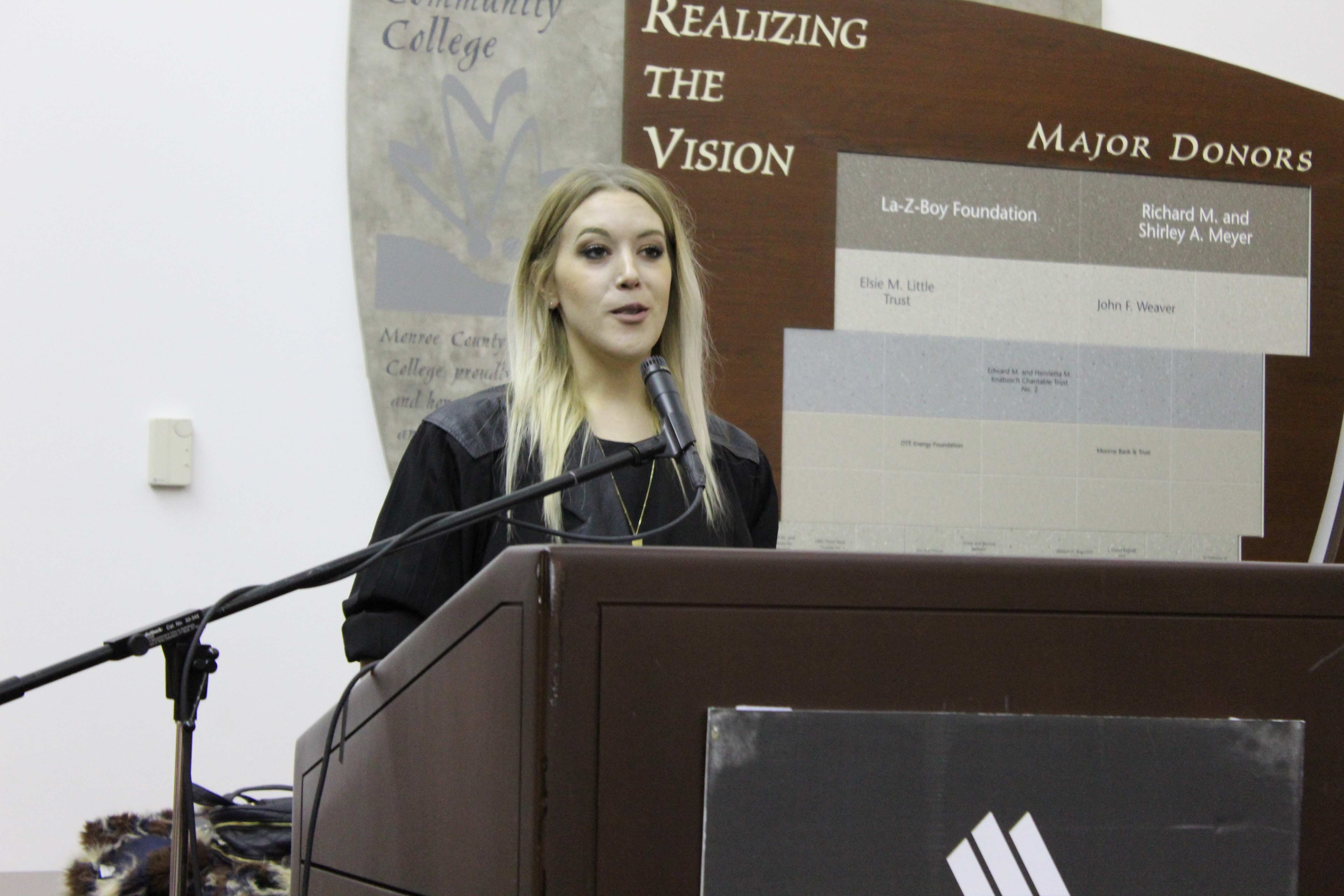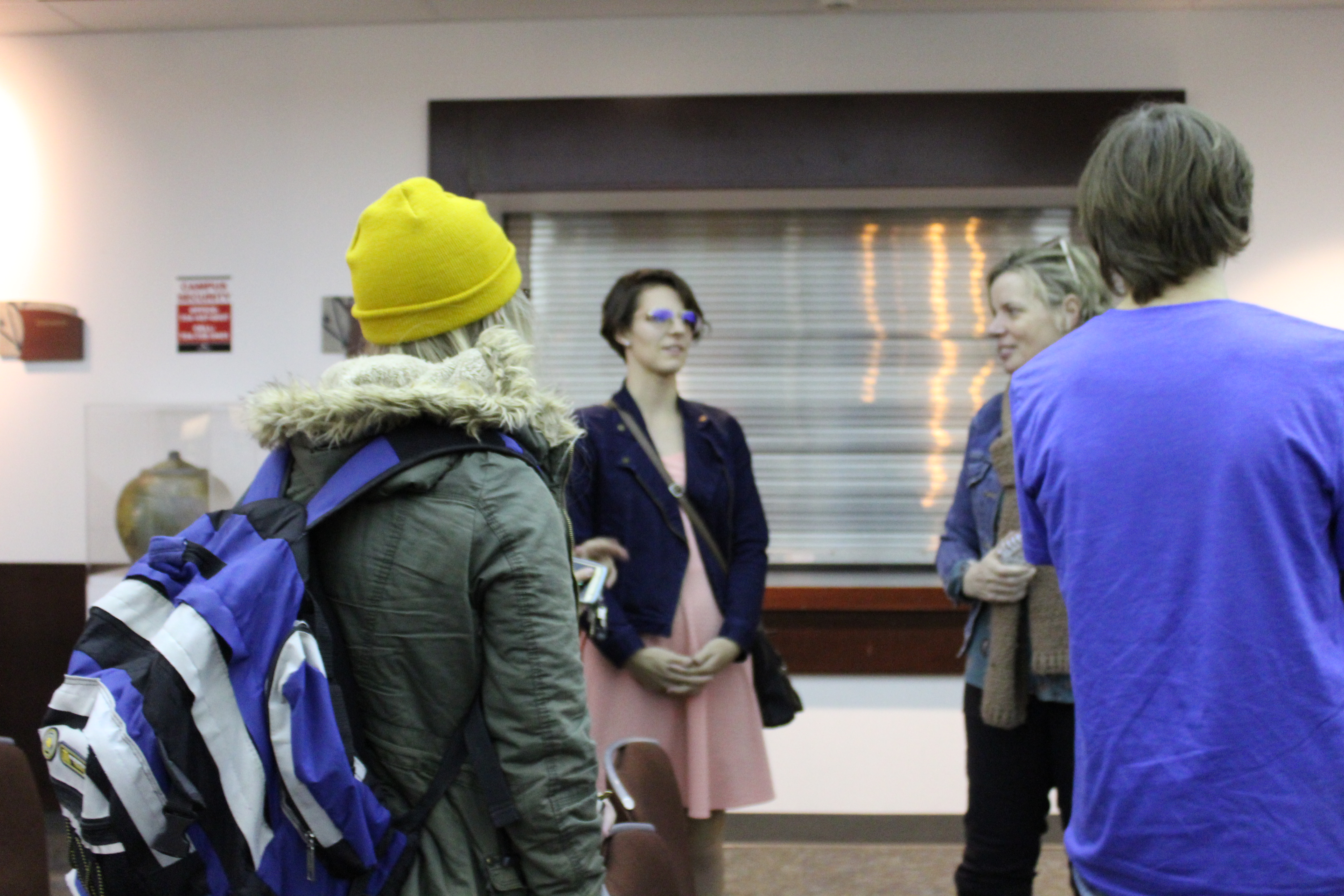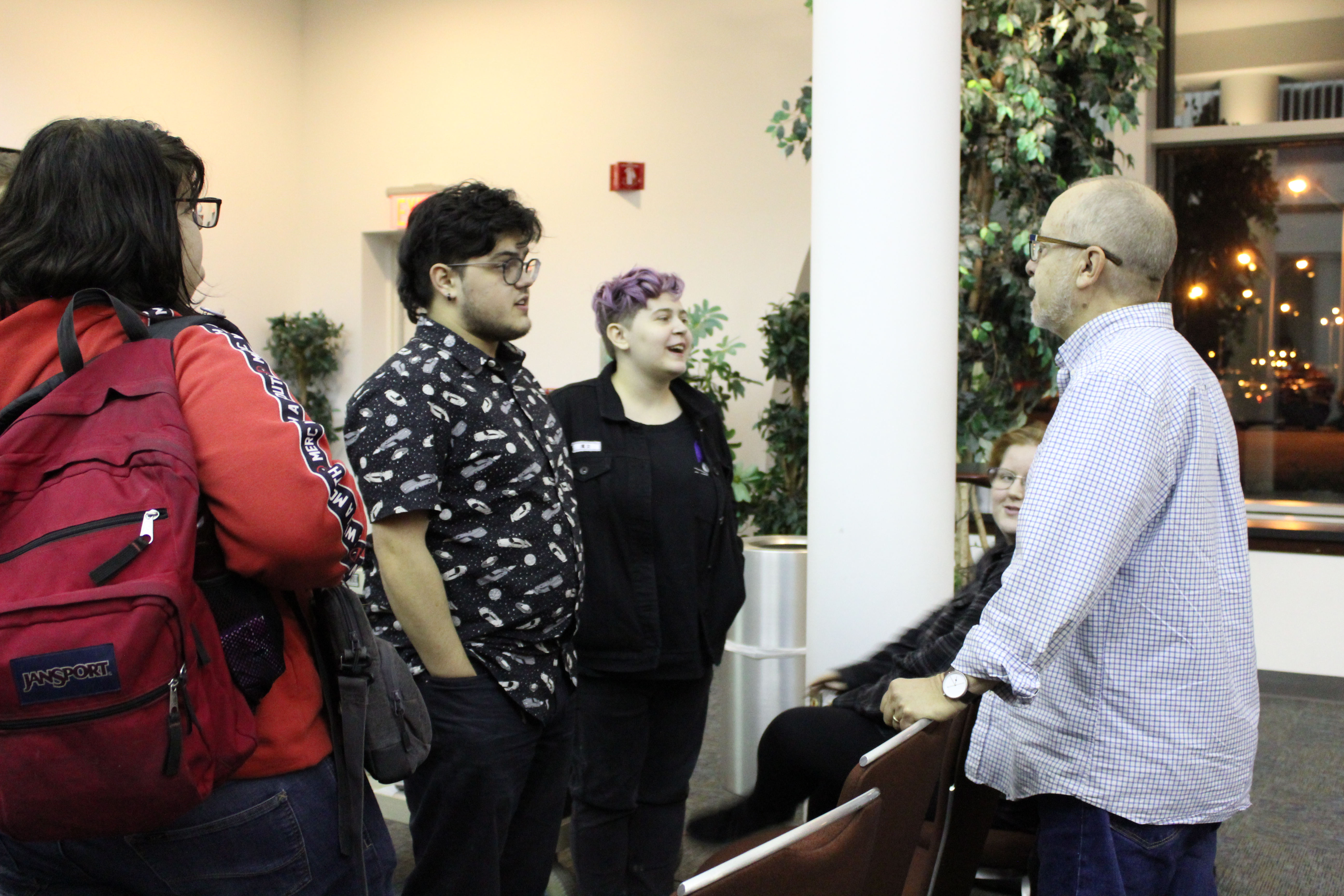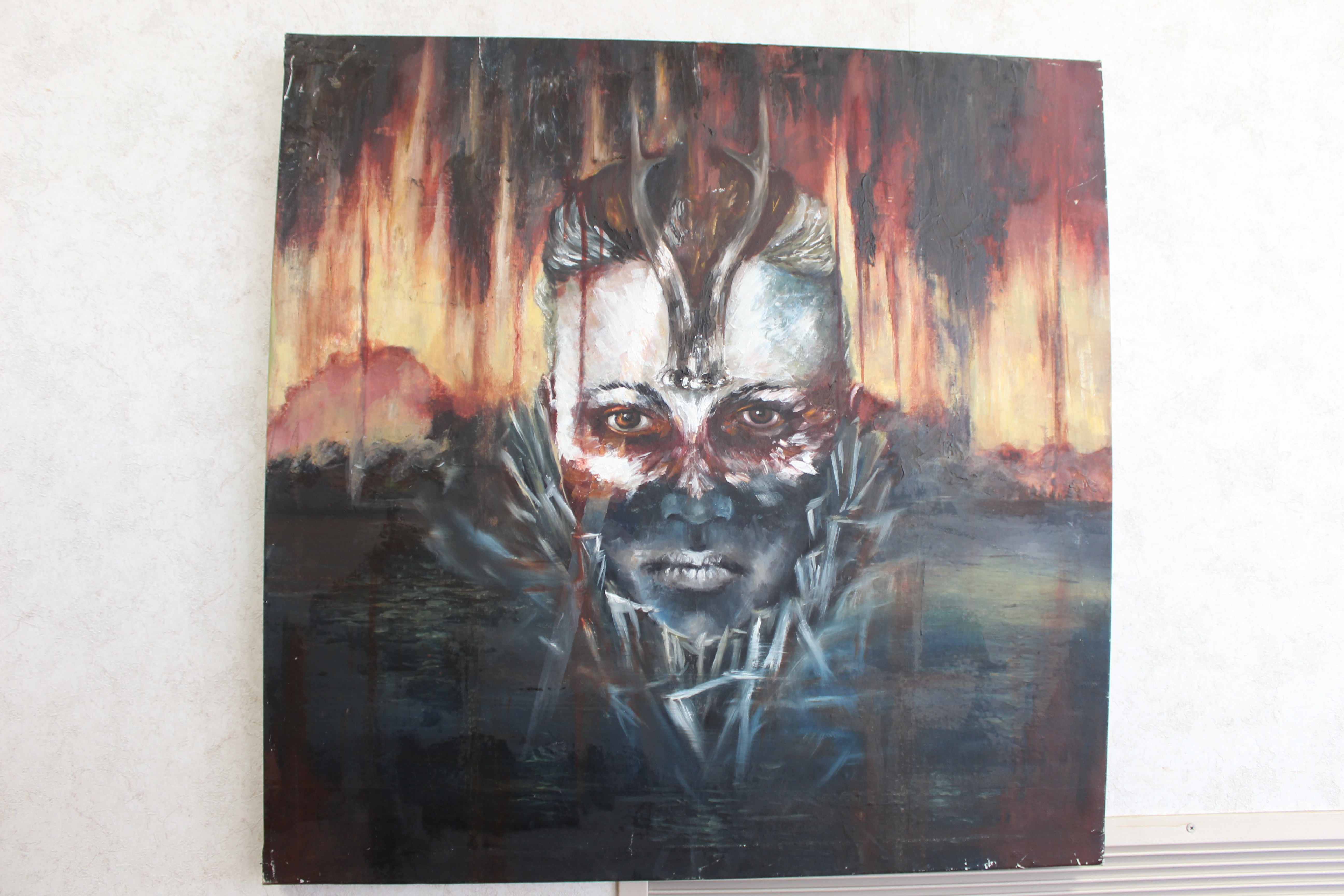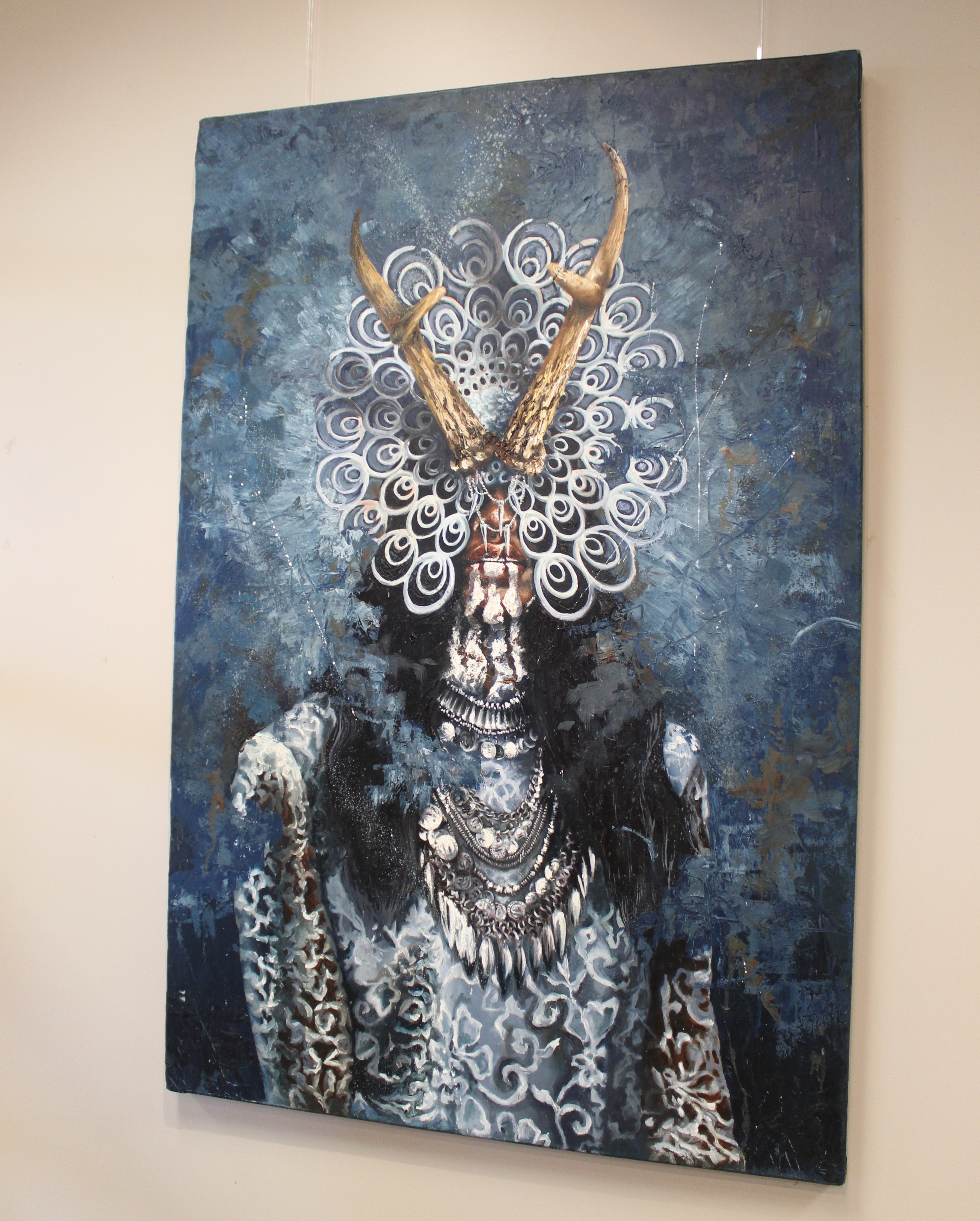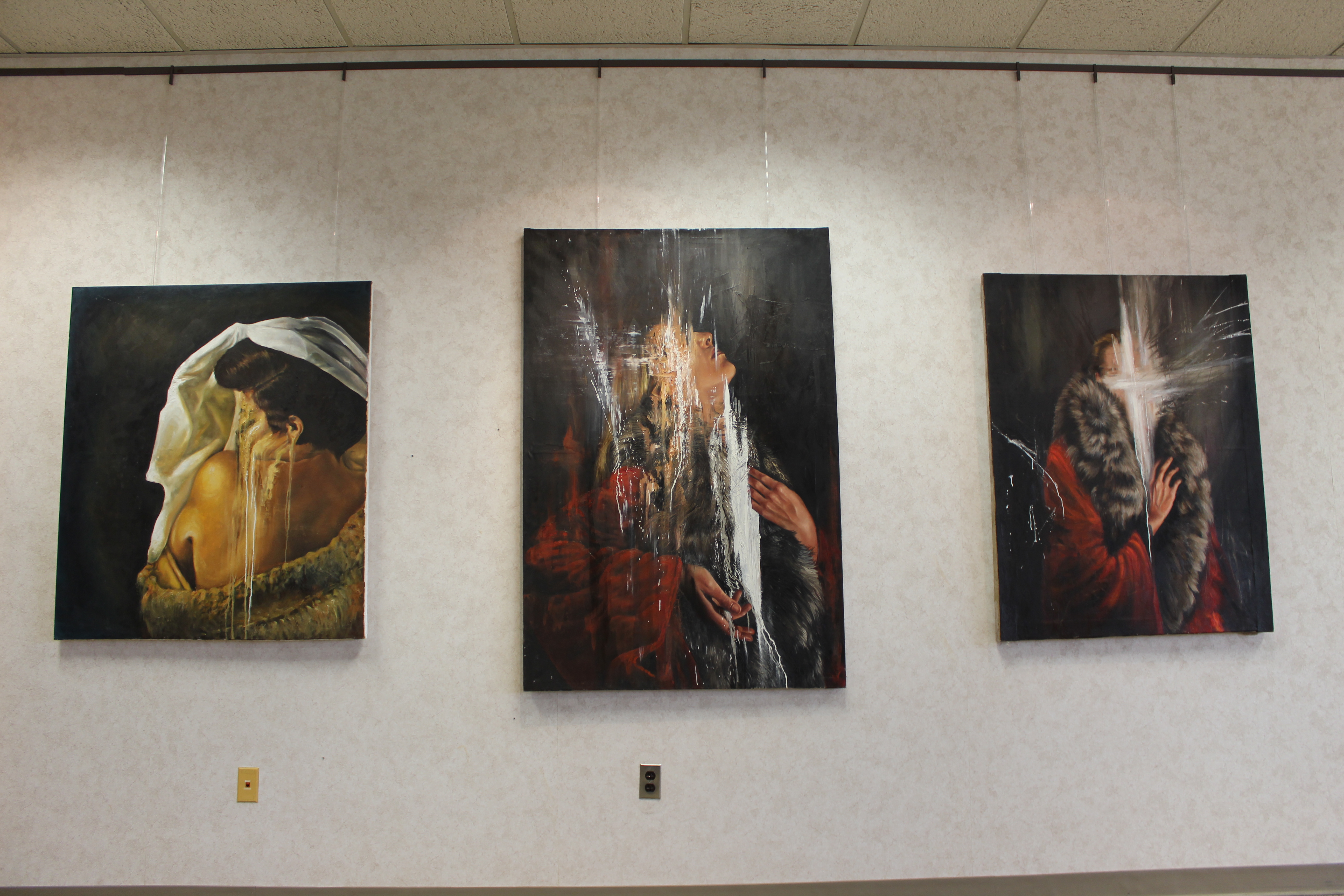Detroit-based painter and activist Anna van Schaap uses her work to communicate powerful messages about women, perfectionism and society.
Van Schaap spoke about her work at Monroe County Community College on Oct. 24. The lecture was held in the La-Z-Boy Center Atrium as a part of MCCC’s Visiting Artist series.
Van Schaap lectured to students and community members about her career and the themes portrayed in her work. She also shared advice about the importance of joining the art community and supporting oneself as an artist.
Van Schaap currently lives in Detroit but grew up in Grand Rapids. From a young age, she said she knew she didn’t mesh with the city’s conservative values.
“It always felt like a place I did not fit,” van Schaap said.
Van Schaap left Grand Rapids after graduating high school. She moved to Ann Arbor to attend the University of Michigan (UM). She graduated from UM in 2010 with a degree in fine art with a concentration in painting. In addition, she earned a degree in art history and curatorial studies from the UM Museum of Art’s program with a minor in Women’s Studies.
After graduating from UM, she moved to Detroit and said an art scene was being cultivated in the area.
“It seemed like a natural transition for me,” van Schaap said.
Although van Schaap was excited by Detroit’s art scene, she didn’t know any artists who lived in the city. She described the difficulty of lacking a community of artists to support her.
“I moved to Detroit after graduating without knowing anybody,” van Schaap said. “It was where I wanted to be because of the art scene happening there, but I did not know a soul.”
Van Schaap quickly realized the need to find group of other artists to connect with.
“I realized the necessity for networking and community as an artist,” van Schaap said.
“We support each other through the noes and the yeses, the ebbs and the flows. If you don’t have that community behind you, you will constantly feel that isolation. You will not find the ability to move forward when the noes are more overwhelming than the yeses.”
Van Schaap’s work combines traditional portraiture with surrealist painting.
“My work is about finding the visual language about the intangibility of feelings, experiences, the things that we can’t quite pinpoint. Specifically, my work is very much about female identity. It’s about the beauty, the power of women, but it’s also about the opposite – the destruction, the objectification, the infantilization, the dehumanization of the femme body.”
Van Schaap also cited perfectionism as a large theme in her work.
“I grew up a total perfectionist. That became a really overwhelming feeling of constant failure. There isn’t any such thing as being perfect,” she said.
Van Schaap said after realizing nothing is perfect, it led her to come up with the form of finalizing my paintings.
Van Schaap shared her process of creating a painting that looks perfect and destroying that perfection in the last few layers of the piece. She used her piece “Proxy for Ruin” as an example of her process.
“For me, that was the catharsis I needed to finally express my feeling of destroying the need to be perfect, to create perfect things.”
Many of her pieces speak to the ways women are often silenced. That is the reason hands are a prominently featured in her work.
“Hands are a communication tool, and it’s a tool that women in particular use to emphasize what they’re saying, because we’ve been ingrained to believe the things we have to say are not important. Even though the identities themselves are smeared, obscured, or eradicated completely, they’re still communicating.”
Van Schaap also explained how she uses her art as a form of activism. She is involved with Indecline, an organization that uses art to protest social and economic issues in America.
“Creating real change sometimes takes the consistent action of the voices and perspectives of a multitude of people,” van Schaap said of her work with Indecline, “It was a way to use my work to resonate on an impactful level with people.”
In addition to sharing stories about her background and work, van Schaap spoke about starting a career in the arts and supporting oneself as an artist.
“Artists never talk about money. I don’t get it,” she said. “One of the biggest obstacles in your creative process is finding a way to support yourself and your practice.”
When asked about finding her niche in the art world, van Schaap said it’s something she’s still discovering.
“I’m not done. I’m still finding my niche. I still get noes,” van Schaap said. “How did I find my niche? By not accepting the noes. My niche came from staying true to the work that I was doing and why I wanted to be doing it.”
Van Schaap said the most important part about making art that will resonate with an audience is to be fully invested in the work you create.
“I don’t think you can create works that will have an impact if you’re not investing a ton of yourself in the work that you do, if there aren’t pieces of you all over it.”
Kathy Gibson, a fine arts student at MCCC, was inspired by van Schaap’s lecture.
“She has a theme that she’s trying to get across about women,” Gibson said.
Gibson’s favorite piece by van Schaap was “The Hunger,” which depicts a woman standing in between two hyenas.
“To me, it spoke to the fact that women go hungry a lot due to men’s standards of what we should look like,” she said. The older you get, the more difficult it gets. I feel like that sometimes, like those hyenas are right there and I’m angry, because I really just want to be left alone.”
Laura Van Noord, a former educator and self-professed art lover, also said she felt “The Hunger” was a powerful piece.
“I felt that in the opportunity respect. There’s women that are obliterated, and there’s the hyenas, and opportunity is just a hyena away, if we can just get past the hyena,” she said.
Rose Tibai, a graphic design student at MCCC, appreciated the darker elements that are featured throughout van Schaap’s paintings.
“Her kind of art really appealed to what I like: darker-looking stuff,” Tibai said.
“I don’t really do the dark stuff, but I like to see it. It’s a strong emotion you don’t always see in art. I think she conveys her emotions through her art really well. She does a good job representing what she’s trying to say.”
Therese O’Halloran, MCCC’s assistant professor of art, said she was appreciative of van Schaap’s openness about her journey as an artist.
“I think the main thing was that she connected to the students,” O’Halloran said, “They felt like they could talk to her. [She] made them realize that connection, the community – that’s important. The other thing is her transparency, her honesty. Probably one of the best speakers we’ve had.”
Van Schaap’s work will be displayed in the Campbell Learning Resources Center Library until Nov. 24. The display is open to the public and is free of charge.
To learn more about van Schaap, visit her website www.annavanschaap.com or her Instagram page @theother_twistedsister.

